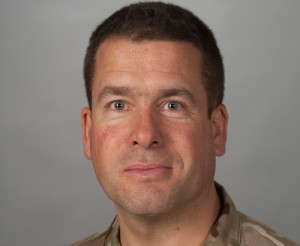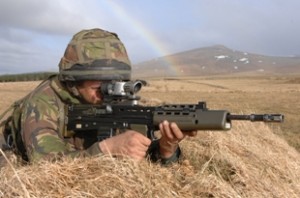Hello. My name is Frank. When I’m not watching my nine-year-old son play football and rugby – that’s his order of preference - I am Head of DIO Service Delivery (SD) Training, responsible for the Training Service. We are the part of DIO that enables Defence and other government training users - that’s the people who use the training estate - to live, work and train.

In delivering that service, DIO SD Training is supported by most of the functional teams across the DIO. We all come together as a single virtual flexible team to deliver the best possible service for the troops that train on our estate.
As a team we strive to deliver the highest quality Training Service. Above all, we deliver a ‘safe place to train’. This means that we try to ensure the training estate does no harm or injury to the people that use it. At all times, public safety is a prime consideration for us. We work hard to balance the needs of our users with safe public access.
Remote and rugged
The Defence training estate covers over two-thirds of the 230,000 hectares(ha) owned by the MOD. That’s about one percent of the UK’s land mass. It’s made up of areas that are remote, rugged and which historically have had little agricultural value.

As military training areas, most of our sites missed out on the changes brought about by post-war agricultural growth. As a result, many are now nationally and internationally recognised for their environmental, archaeological and cultural importance. They include:
- more than 170 Sites of Special Scientific Interest (SSSI).
- more than 40 Special Protection Areas (SPAs).
- more than 60 Special Conservation Areas (SCAs).
- more than 25 Ramsar wetland sites of international importance).
- more than 700 Scheduled Archaeological Monuments.

We manage 16 major training areas, 35 training camps, 85 training areas, 52 range complexes and 24 marine danger areas.
Managing the training estate
In the UK specifically, DIO SD Training runs ranges, training camps, facilities and training areas. We manage and develop the estate infrastructure, infrastructure services and the rural estate in order to provide fit-for-purpose facilities for our users.
The team also allocates the training estate whilst offering planning advice and guidance to make sure that our users can make the most of training facilities.
DIO SD Training also manages 259,000 ha in Canada, 277,000 ha in Kenya and 18,000 ha in Germany.
On average some 9,000 servicemen and women use the training facilities each day, although that can surge up to 30,000 – that’s 10,000 more people than you can pack into the O2 Arena in London!

We are responsible for a large, rich and diverse heritage. This means that we must balance environmental considerations alongside the needs of the military.
Preserving the environment
The MOD has a legal obligation to protect and preserve the environment. DIO’s SD Training team also gets involved in numerous improvement and maintenance projects across the training estate. Our goal is to improve the experience for our Armed Forces and for all the people that use it.
Managing such a large and diverse estate requires a lot of collaborative work between our staff, the wider MOD, our users and our industry partners. A significant number of organisations and people have a stake in the estate. We work hard to engage all of them to make sure the training estate continues to function and best serves the users that rely on it.
Things are changing for us in the not-too-distant future. The arrival of the Next Generation Training Estate Prime (NTEP) contract will bring almost all of the training estate under our single management. The challenge will then be for us to develop a fit-for-purpose estate that can support the modern-day training needs of our Armed Forces, whilst preserving our beautiful countryside.